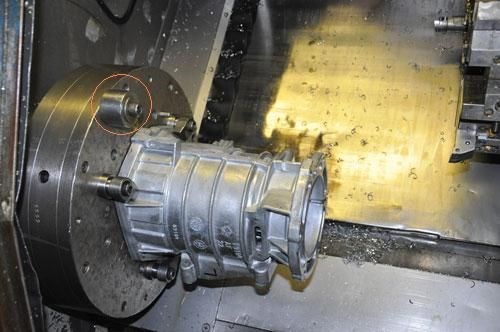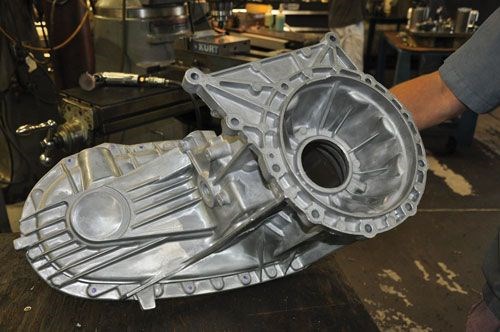Balancing Act
Lathe spindle balancing enables this shop to turn key features of castings rather than performing boring or facing operations on a mill.


Lathe spindle balancing enables this shop to turn key features of castings rather than performing boring or facing operations on a mill.
Here’s another example of how I learned about some nifty thing a shop is doing while visiting to create an article on a different topic. A few months ago, I visited Millennium Machining, a Tier Two auto supplier in Macedon, New York, to create this article about its use of web-based, remote spindle monitoring software.
As I toured the facility, I found that Millennium commonly turns critical features of oddly shaped castings rather than machining them on a mill. Proper machine balancing plays a key role in effectively turning such non-symmetrical components. One example is the transmission extension shown above-left fixtured to a Doosan turning center. Instead of performing boring and facing operations on a mill, the shop balances the rotating elements of this lathe to allow those features to be turned. The shop says this creates better surface finishes and more accurate bore alignment.
In the case of the extension, a counter-balancing weight (circled) has been added to the faceplate. Depending on the application, balancing may also be accomplished by removing weight from specific areas on the faceplate. Although the extension doesn’t create a drastically unbalanced turning condition, the transmission front case shown above-right does. After balancing, lathes will perform similar turning operations for these unwieldy front cases, too.
Related Content
-
Tungaloy Expands Drill System With Drill Sleeves
Adding drill sleeves to the standard lineup enhances drilling productivity of Swiss-type sliding-head automatic lathes.
-
How to Turn Machine Shop Downtime Into Process Expertise
To take advantage of a lull in business, JR Machine devised a week-long cutting tool event that elevated the shop’s capabilities with aerospace alloys.
-
How to Tackle Tough Angled Pocket Milling With Two Tools
Milling a deep pocket with a tight corner radius comes with unique challenges, but using both a flat bottom drill and a necked-down finishing tool can help.
.png;maxWidth=970;quality=90)
.jpg;width=70;height=70;mode=crop)










.png;maxWidth=300;quality=90)
